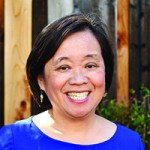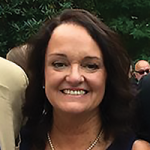Teaching Statistics and Data Science at a Community College
Statistics and data science degrees are some of the fastest-growing undergraduate programs in the country. We wanted to know if this growth has affected teaching statistics at community colleges and if there are any relevant changes professors have seen or experienced.
WEST VALLEY COLLEGE
Northern California
Rebecca Wong has taught mathematics and statistics at West Valley College for more than 20 years. She enjoys designing activities to help students actively explore statistical concepts and encouraging students to apply those concepts to areas of personal interest.
Describe the statistics course(s) your college offers and any recent changes you’ve made.
At West Valley College, we offer an elementary statistics course that fulfills mathematics and quantitative reasoning transfer requirements for our students. Our department offers a course aligned with the GAISE standards, emphasizing conceptual understanding, interpretation, working with real-world data, and the use of technology.
What do you like most about teaching statistics in the community college setting? What challenges do you experience that might be unique to community colleges?
Statistics is one of my favorite classes to teach. It is so easy to bring students’ interests into the classroom and find topics they find engaging. For example, one of my students last semester has a YouTube channel. She was excited to learn how to understand all the data analytics YouTube sends her about her viewers. As part of a class project, another student interviewed an anthropologist and was surprised to learn how much statistics played a part in the work he did. Based on the interview, this student was able to expand her professional network and find an internship opportunity. Stories like this aren’t uncommon in my statistics course. There is an excitement and interest in my statistics course that is not replicated in my algebra or calculus courses quite as easily.
Teaching statistics at a community college does have its unique challenges. I, like the majority of my colleagues, have degrees in mathematics—not statistics. I have to depend on conferences, networking, and reading to expand my background in the subject area. In mathematics, I understand the depth and breadth of the subject area and the connections between the various courses in the sequence of study. Not having the same background in statistics makes it difficult to advise students who might consider statistics as a major. In addition, community colleges offer only one course in statistics, limiting the ability of students to explore statistics as a possible major.
Describe an emerging trend you have noticed related to teaching statistics in community colleges.
One trend at the community colleges has been the development of a “pre-statistics” course. Currently, community college students (based on placement test scores) have to take several levels of algebra before taking statistics. Rather than repeating an algebra curriculum, pre-statistics is a one-semester course that focuses on those skills that students need to be successful in the elementary statistics course. We have been offering the pre-stats course for one year, and it has been successful in accelerating students through their transfer-level mathematics course.
CAPE COD COMMUNITY COLLEGE
West Barnstable, Massachusetts
Mary Kehoe Moynihan chairs the ASA/American Mathematical Association of Two-Year Colleges (AMATYC) Joint Committee and is an active member of the New England Mathematical Association of Two Year Colleges and AMATYC. She has taught mathematics and computer science at Cape Cod Community College since January 1979.
Describe the statistics course(s) your college offers and any recent changes you’ve made.
Elementary Statistics at Cape Cod Community College is a non-calculus–based introduction to statistics geared toward non-STEM majors. It fulfills the three-credit mathematics graduation requirement.
Are you seeing increasing enrollment in your statistics classes, and, if so, what do you think is driving it?
Statistics is a “service course” for us—our STEM majors don’t traditionally take it. We’ve seen a significant increase in our enrollment largely due to other departments such as psychology and nursing recommending or requiring their majors to take elementary statistics.
What do you like most about teaching statistics in the community college setting? What challenges do you experience that might be unique to community colleges?
I love that when a student in our statistics course asks when he or she will ever use statistics, the honest answer is “every day.”
A challenge I face at the community college is that many students simply don’t have the resources to buy the materials required for many statistics courses. I currently use the materials from a free online course. Students can rent a calculator from our library, and the statistical software I’m using costs less than $20.
Describe an emerging trend you have noticed related to teaching statistics in community colleges.
The introductory statistics course is the most volatile of the courses taught by the mathematics department right now. There are pressures, expectations, and changes coming from many directions.
From the developmental mathematics perspective, many schools are “bundling” developmental mathematics and statistics into a pathway designed to help non-STEM students succeed in a college-level mathematics course. For example, the goal of both the Carnegie Foundation’s Statway and the statistical reasoning pathway in the Dana Center’s New Mathways project is to improve student success in a college-level statistics course. States have tired of high-school graduates spending years in developmental mathematics courses required by many colleges as the prerequisite to college-level mathematics courses such as statistics.
This epidemic was the focus of the first National Summit on Developmental Mathematics held just before the 2013 AMATYC conference in Anaheim. In my state (Massachusetts), funding of the community colleges is now directly linked to student success and graduation rates. Statistics has most often been the focus of these acceleration/student success projects, with some advocates arguing that little material in the traditional algebra prerequisite is actually needed in a statistics course.
From the Common Core perspective, a significant number of topics we include in introductory statistics will be taught in K–12. If the Common Core is implemented successfully, it will dramatically affect the topics covered in the introductory statistics course.
Some prominent members of the statistics education community believe statistical inference should be introduced with bootstrap confidence intervals and randomization-based hypothesis tests, rather than the traditional parametric techniques. Recent trends have increased the emphasis on inferential statistics in the introductory statistics course. Therefore, fundamentally changing the way inference is taught would substantially change the course.
There is a temporary ASA committee reviewing the GAISE College Report. This workgroup is updating the report, with recommendations expected as soon as the end of 2015. The GAISE College Report was originally published in 2005 and has been influential in shaping the modern statistics course.
Finally, the projection of unfilled jobs caused by the explosion of Big Data analytics and data science has many wondering if our non-STEM introductory statistics courses might provide fertile ground for future statistics/data science majors. Traditionally, most majors begin their program with calculus, and most introductory statistics courses are non-calculus based. Still, as we look for hundreds of thousands of professionals trained in Big Data analytics, exposing introductory statistics students to some of the basic concepts of data science might inspire students to explore the field.
Note that several of these trends are pulling the introductory statistics course in different directions. The pathways projects often minimize the mathematics prerequisite for the course and the traditional algebra topics in the paired courses, while the goal of the Common Core is to prepare college-ready students who have already achieved many of the learning outcomes in the current college-level introductory statistics course. Meanwhile, an effort to attract statistics/data science majors would target students with a strong mathematics background.
Job analysts predict statisticians will be in high demand, and statistics will be the “hot” job over the next decade. I believe the modern introductory statistics course will adapt to these influences, providing many challenges and opportunities for all faculty teaching the course.
Characterize the students who tend to take statistics at your campus/college.
Almost every student is taking elementary statistics to fulfill their mathematics general education requirement: “I’m taking the course because it’s required for my degree.”
What advice do you have for other statistics instructors at community colleges?
A modern statistics course is most likely radically different from any statistics course you took as a student. Try to keep up with the most recent recommendations for introductory statistics from the professional societies, including the Mathematical Association of America, ASA, and AMATYC. There are free webinars and resource pages available on their websites. I just Googled “statistics webinars teaching resource” and found valuable links, including the AMATYC statistics resources page the ASA/AMATYC Joint Committee oversees.
What advice do you have for community college students regarding statistics and or data science?
Do the homework. You need to practice your skills and carefully read assigned material to master common statistical procedures, gain a conceptual understanding of statistics, and hopefully develop a statistical way of thinking.
MONTGOMERY COLLEGE
Germantown, Maryland
Brian Kotz is a mathematics and statistics professor at Montgomery College in Germantown, Maryland. A statistics educator for more than 20 years, he was appointed to the ASA/AMATYC Joint Committee in 2012 and has authored numerous print and video resources.
Describe the statistics course(s) your college offers and any recent changes you’ve made.
We offer a general introductory statistics course and a business/economics statistics course. Both courses have been using open resources lately to complement textbook resources, and some sections are completely using open resources on a trial basis. Many sections of the introductory statistics course are working with simulation-based inference this semester, and a biostatistics course is being considered for development.
Are you seeing increasing enrollment in your statistics classes, and, if so, what do you think is driving it?
Yes. Some of that is due to the increase in overall enrollment at our college. However, many students are choosing to take statistics (as opposed to other courses in our mathematics/statistics department) to meet their mathematics requirements for graduation and quite a few programs require or strongly recommend statistics for their degree.
What do you like most about teaching statistics in the community college setting? What challenges do you experience that might be unique to community colleges?
I like that we are serving and reaching a community of dedicated learners who, for various reasons (e.g., finances, job, family), either cannot or choose not to immediately participate in a four-year college environment. This population of learners is quite large in number, at least in our community.
Describe an emerging trend you have noticed related to teaching statistics in community colleges.
I think the GAISE standards really helped codify expectations and practices and guide instruction in both two-year and four-year colleges. Ultimately, I want the partnership between the ASA and AMATYC to remain strong; to continue to evolve; and to develop in meaningful ways regarding curricula, professional development, open technology resources, and so on.
What advice do you have for other statistics instructors at community colleges?
The opportunities for professional development are many, and the ASA statistics education community is a particularly caring, engaged, and helpful group. Do not hesitate to contact them (e.g., authors, colleagues at a nearby four-year college, ASA section members). They want to work with you!
What advice do you have for community college students regarding statistics and/or data science?
I tell students that whether they plan to use what they have learned to better serve the public, improve their business, or serve as the foundation for the next statistics course they will take upon transferring to their four-year college, they are better informed citizens of our community having been introduced to the discipline of statistics. I also tell them they have the kernel of a very in-demand skill set and encourage them to stay in touch and consider pursuing further coursework in statistics or data science, regardless of whether it is required of them.
COLLEGE OF THE CANYONS
Santa Clarita, California
Monica Dabos is a statistics instructor at College of the Canyons. Recently, the National Science Foundation funded her initiative, TANGO Stat Ed (Training A New Generation of Statistics Educators), to improve the teaching and learning of statistics at the two-year community college level.
Describe the statistics course(s) your college offers and any recent changes you’ve made.
College of the Canyons has one college-level statistics course, Math 140 “Intro to Statistics.” The college has also developed a new statistics preparation course for non-STEM majors called Math 075, “Intermediate Algebra for Statistics.” After successfully completing Math 075, non-STEM students can enroll in Math 140 and complete all the transfer math requirements. We are considering offering another statistics course that addresses more advanced topics, but there are some state regulations limiting what we can offer.
Are you seeing increasing enrollment in your statistics classes, and, if so, what do you think is driving it? Also comment on any emerging trends you have noticed related to teaching statistics in community colleges.
Demand for statistics courses at the community college level has increased dramatically, and we expect this trend to continue. For example, College of the Canyons’ pre-statistics and statistics offerings have grown from 59 in 2012 to 106 currently. California, the largest college system in the United States with 112 community colleges, is experiencing a similar increase. In California, statistics is taught within mathematics departments; however, this adds another challenging dimension because a master’s degree or a PhD in statistics does not qualify an individual to teach statistics (a mathematics degree is required).
Lack of support, combined with little formal training in statistics, are two possible reasons why instructors are reluctant to teach statistics, despite the availability of sections. Technology is another obstacle that faculty, especially part-time instructors, encounter. Many community colleges lack the resources required to implement new teaching methodologies. Using simulations or data sets that have many variables and more than 20 data points are difficult to implement without access to appropriate software and training.
What do you like most about teaching statistics in the community college setting?
I love teaching statistics at the community college level because priority is given to teaching and helping students succeed. I also have the opportunity to shine a light on statistics as a possible career choice when many students are still defining their educational goals.
What advice do you have for other statistics instructors at community colleges? Any advice for community college students regarding statistics (and/or data science)?
The best advice for instructors I can offer is to get connected! In isolation, it is easy to feel lost and/or discouraged when
students do not understand statistical concepts. A few programs are emerging to address this and they are worth mentioning here. CAUSEweb.org offers free webinars. The TANGO Stat Ed program and ASA Member Initiative program both offer mentors and regional hubs for developing and strengthening statistical knowledge of instructors teaching statistics at community colleges. Whether you are an instructor who has experienced success in teaching statistics or an instructor who would like help developing better teaching tools, getting connected is the answer. Get connected, get connected, get connected. This is my mantra.
For students, I’d tell them to dive into statistics to see how relevant it can be to their daily lives and career opportunities. Most importantly, I’d promise them that, with the right instructor, statistics could actually be fun!
AUSTIN COMMUNITY COLLEGE
Austin, Texas
Mary Parker teaches mathematics and statistics at Austin Community College and mathematical statistics at The University of Texas at Austin. She participated in writing curriculum and teaching in the Carnegie Foundation’s Statway project and the Dana Center’s New Math Pathways project.
Describe the statistics course(s) your college offers and any recent changes you’ve made.
We teach elementary statistics from the book Basic Practice of Statistics, 7th edition. Just this year, we added ANOVA as a required chapter, so we now cover chi-squared tests, inference on regression, and ANOVA. To do this, we are de-emphasizing calculations with a hand-held calculator after one-sample t-tests—particularly de-emphasizing calculations of SE. We made several other changes to increase the emphasis on concepts.
We also have worked with both the Carnegie Foundation offering Statway and the Dana Center offering New Math Pathways StatPath. Are you seeing increasing enrollment in your statistics classes, and, if so, what do you think is driving it?
Beginning around 2011–2012, we saw substantial increases in enrollment. More disciplines, particularly health sciences disciplines, began to specifically require statistics.
What do you like most about teaching statistics in the community college setting? What challenges do you experience that might be unique to community colleges?
The small classes (36 or fewer) are helpful for engaging students. There are a variety of challenges, which are mostly related to students being overburdened with work and family obligations and sometimes-unrealistic expectations of the amount of work a college course takes.
Characterize the students who tend to take statistics at your college.
We have significant numbers from health sciences and business studies, but also students from many other areas in which the faculty think their students will benefit more from a statistics course than college algebra. We have a substantial number of returning students, who need statistics as a prerequisite for graduate work in various fields.
What advice do you have for other statistics instructors at community colleges?
Emphasize thinking about data and the conceptual ideas. Statistics students (in courses offered in math departments) usually think the main characteristic of a correct answer is to match the numbers in the solution key. Work on moving them toward describing what information the data is giving about a real-life question of interest.
If your text supports discussion of data ethics, embrace that. It is some of the most engaging material to my students. I have it on a discussion board forum available most of the semester and try to stay out of the conversation as much as reasonable to encourage them to discuss the ethics of various situations with each other.
What advice do you have for community college students regarding statistics and/or data science?
Large data sets are increasingly available, and people are needed to extract useful information from them. In your statistics classes, pay careful attention to what techniques are useful to answer what sorts of questions and why. Learn to use a flexible professional statistical package.






















